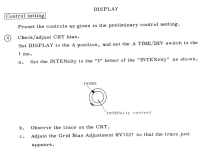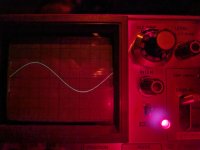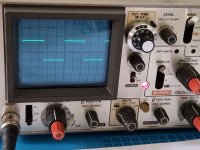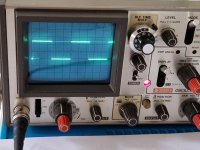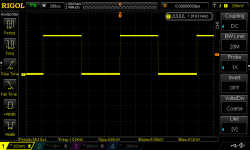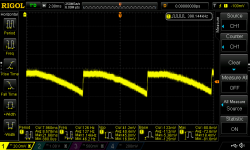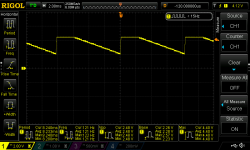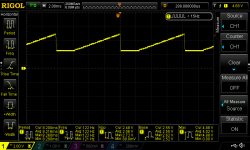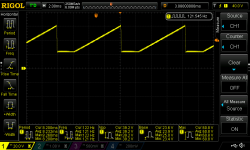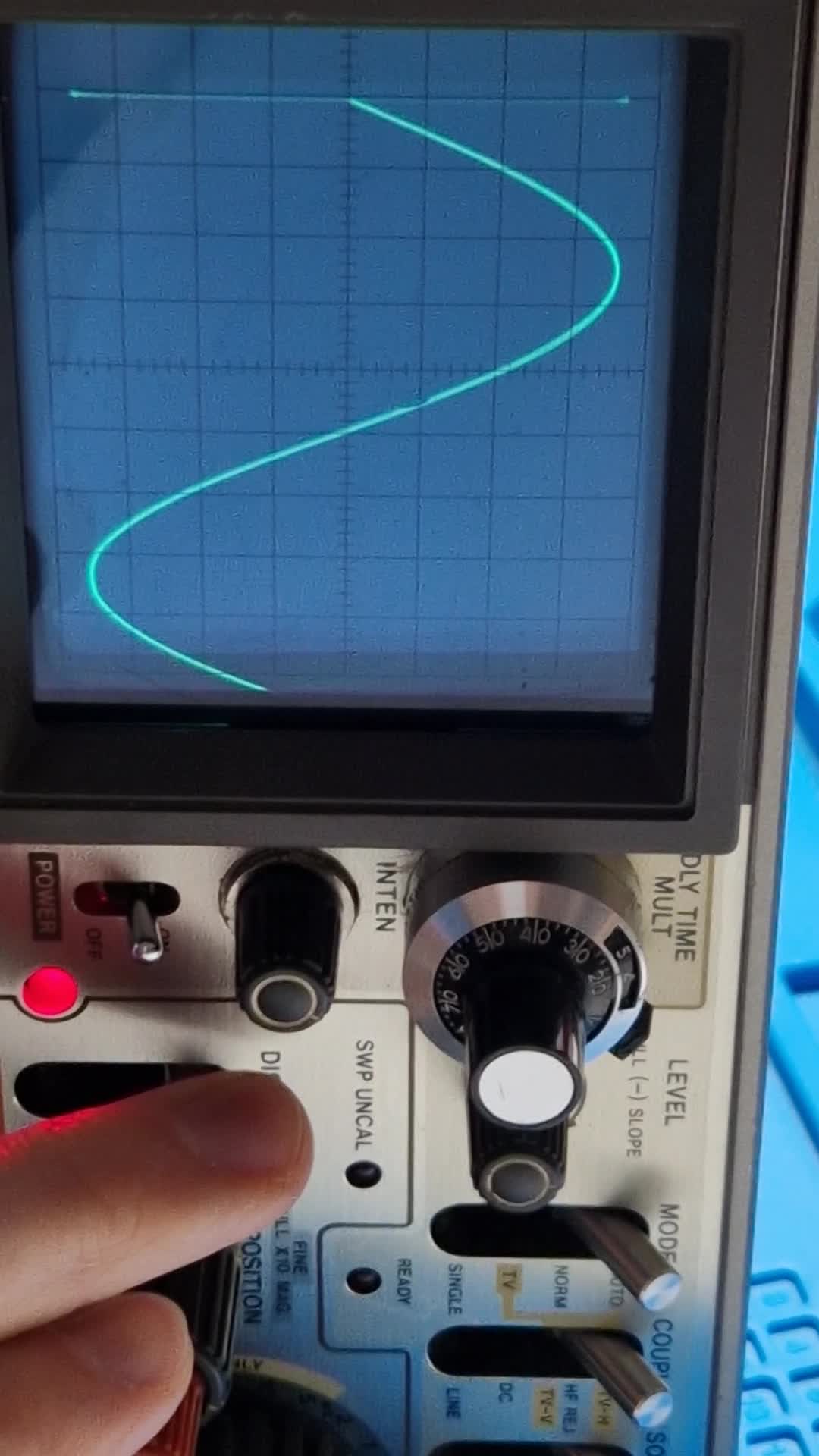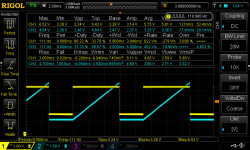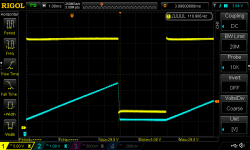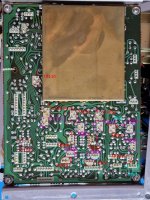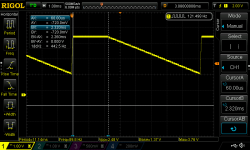Hi community
After @Hugo Holden had convincing arguments to get one of these scopes and one near me showed up (reasonably priced, plus they're quite rare around here) I decided to try my luck and buy it, under the condition that it shows a trace when turned on.
Now, it is pretty banged up, was dirty and it smells like it was in some industrial environment or shop (poor thing). I managed to clean it up and plan to repaint the case, but what bothers me is that in A display mode the intensity needs to be turned up quite a lot for it to show a trace. Otherwise the scope works as it should and is a real joy to handle (I love the haptics and small size).
Regarding troubleshooting: I've downloaded a service manual (https://www.eserviceinfo.com/download.php?fileid=11508) and tested the PSU voltages, which all check out. I fiddled with the CRT gain but it doesn't change the fact that there is a difference in intensity between A and B display mode.
Any advice? I hope it's some out of spec component and not a spent CRT.
Here's a video of the behaviour:

PS: Let me know if this is the right place, or if it's a question better suited for the eevblog forums...
After @Hugo Holden had convincing arguments to get one of these scopes and one near me showed up (reasonably priced, plus they're quite rare around here) I decided to try my luck and buy it, under the condition that it shows a trace when turned on.
Now, it is pretty banged up, was dirty and it smells like it was in some industrial environment or shop (poor thing). I managed to clean it up and plan to repaint the case, but what bothers me is that in A display mode the intensity needs to be turned up quite a lot for it to show a trace. Otherwise the scope works as it should and is a real joy to handle (I love the haptics and small size).
Regarding troubleshooting: I've downloaded a service manual (https://www.eserviceinfo.com/download.php?fileid=11508) and tested the PSU voltages, which all check out. I fiddled with the CRT gain but it doesn't change the fact that there is a difference in intensity between A and B display mode.
Any advice? I hope it's some out of spec component and not a spent CRT.
Here's a video of the behaviour:

PS: Let me know if this is the right place, or if it's a question better suited for the eevblog forums...

